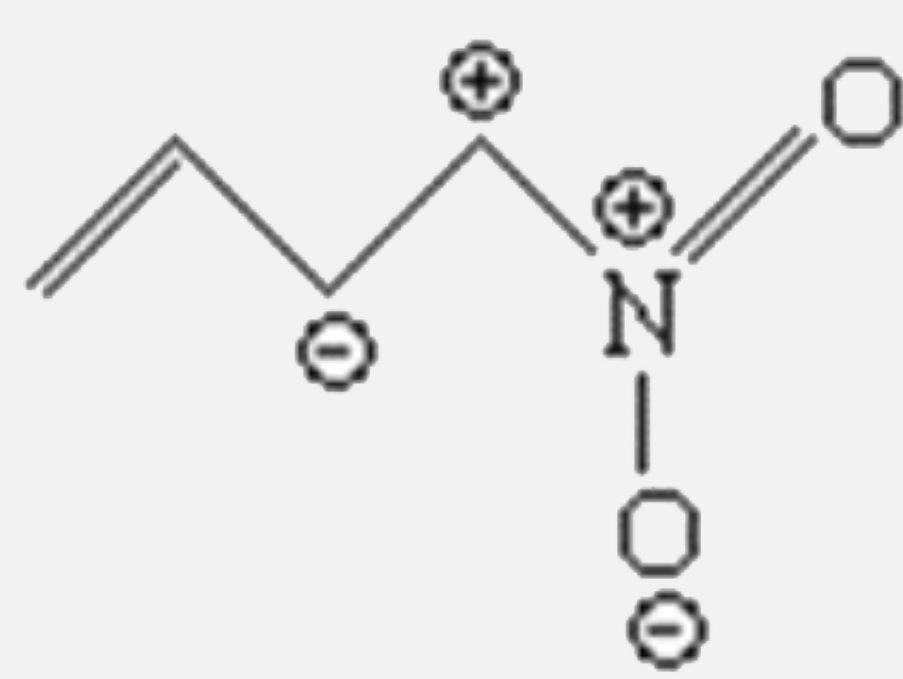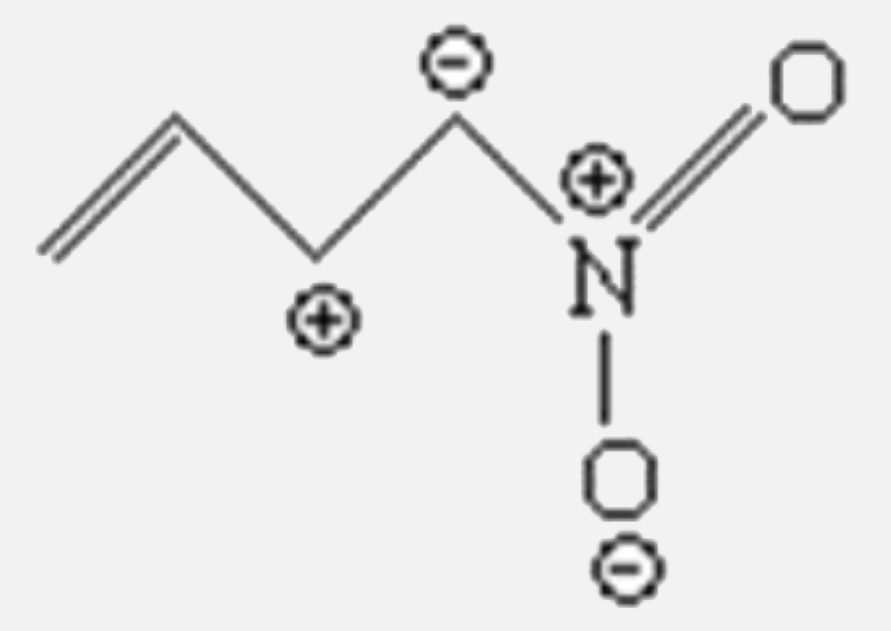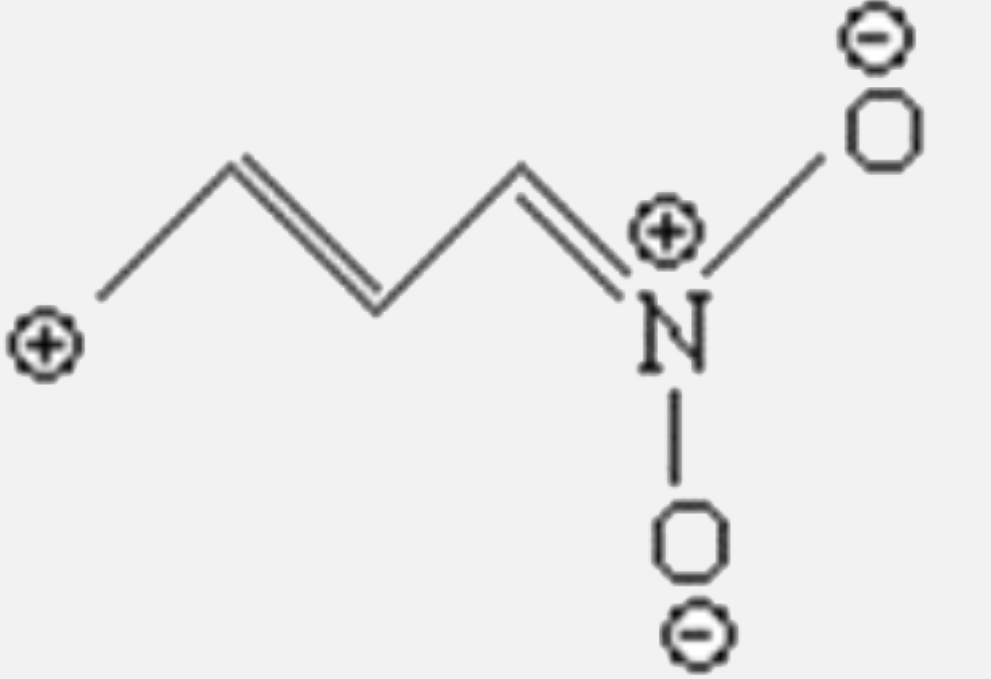Among the following, the least stable resonance structure is :




The correct Answer is:A
To determine the least stable resonance structure among the given options, we will evaluate each structure based on the following criteria:
1. Full Octet: All atoms should ideally have a full octet (8 electrons) in their valence shell.
2. Number of Covalent Bonds: More covalent bonds generally contribute to stability.
3. Charge Distribution: Negative charges should be on the most electronegative atoms, and positive charges should be on less electronegative atoms.
Now, let's analyze the resonance structures step by step:
Step 1: Analyze the First Structure
- Octet Check: Check if all atoms have a full octet.
- Charge Check: Identify the presence of charges, especially positive charges on adjacent atoms.
- Conclusion: In this structure, there is a carbocation (positive charge on carbon) and two positive charges are adjacent to each other. This leads to increased potential energy due to repulsion between like charges, making this structure less stable.
Step 2: Analyze the Second Structure
- Octet Check: Ensure all atoms have a full octet.
- Charge Check: Look for opposite charges.
- Conclusion: This structure has a positive charge on one atom and a negative charge on another. The presence of opposite charges stabilizes the structure, making it more favorable.
Step 3: Analyze the Third Structure
- Octet Check: Confirm that all atoms have a full octet.
- Charge Check: Check for charge distribution.
- Conclusion: Similar to the second structure, this one also has a favorable charge distribution, contributing to its stability.
Step 4: Analyze the Fourth Structure
- Octet Check: Verify the octet rule.
- Charge Check: Assess the charge locations.
- Conclusion: This structure also maintains a favorable charge distribution and has all atoms with a full octet.
Final Conclusion
After analyzing all the structures, the first structure is identified as the least stable resonance structure due to the presence of two adjacent positive charges, which increases potential energy and leads to instability.
2. Number of Covalent Bonds: More covalent bonds generally contribute to stability.
3. Charge Distribution: Negative charges should be on the most electronegative atoms, and positive charges should be on less electronegative atoms.
- Octet Check: Check if all atoms have a full octet.
- Charge Check: Identify the presence of charges, especially positive charges on adjacent atoms.
- Conclusion: In this structure, there is a carbocation (positive charge on carbon) and two positive charges are adjacent to each other. This leads to increased potential energy due to repulsion between like charges, making this structure less stable.
- Octet Check: Ensure all atoms have a full octet.
- Charge Check: Look for opposite charges.
- Conclusion: This structure has a positive charge on one atom and a negative charge on another. The presence of opposite charges stabilizes the structure, making it more favorable.
- Octet Check: Confirm that all atoms have a full octet.
- Charge Check: Check for charge distribution.
- Conclusion: Similar to the second structure, this one also has a favorable charge distribution, contributing to its stability.
- Octet Check: Verify the octet rule.
- Charge Check: Assess the charge locations.
- Conclusion: This structure also maintains a favorable charge distribution and has all atoms with a full octet.
After analyzing all the structures, the first structure is identified as the least stable resonance structure due to the presence of two adjacent positive charges, which increases potential energy and leads to instability.
Similar Questions
Knowledge Check
- Question 1 - Select One
Among the following, the most stable isomer is :
A B
B C
C D
D
- Question 2 - Select One
Among the following, the most stable isomer is :
A B
B C
C D
D
- Question 3 - Select One
Which will be the least stable resonating structure?
ACH2=CH−⊕CH−өCH−..NH2BөH2−⊕CH−CH=CH−..NH2CөH2−CH=CH−CH=⊕NH2DCH2=CH−өH−CH=⊕NH2
Among the following the least soluble sulphate is
View SolutionAmong the following the most stable carbocation
View SolutionAmong the following the most stable compound is
View SolutionWhich of the following is least stable
View SolutionWhich will be the least stable resonating structure?
View Solution



 .
.